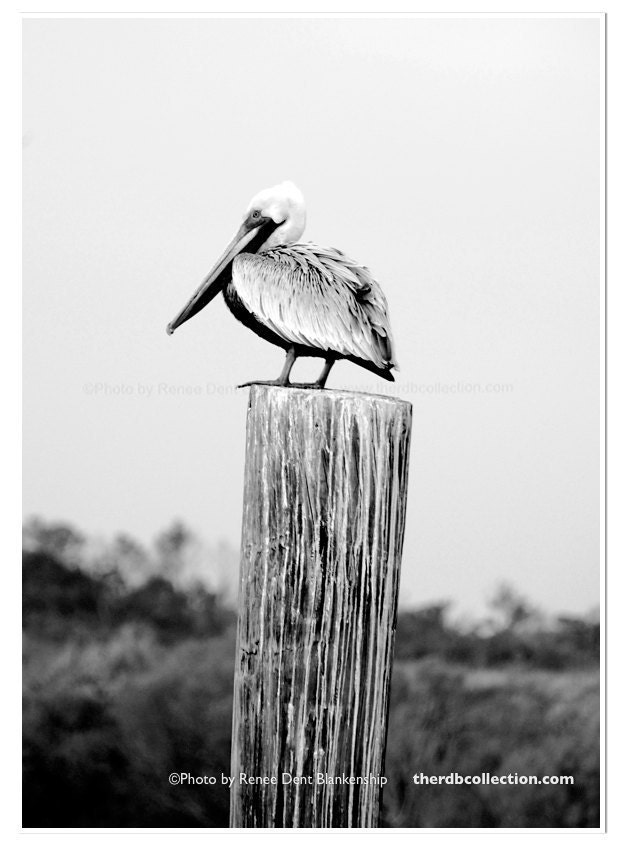The Brown Pelican is a striking bird with an oversized bill, serpentine neck and huge body. Squadrons glide above the surf along our coastlines, rising and falling as gracefully as the waves below.
On the Gulf coasts they live in estuaries and coastal marine habitats. These unique water birds breed mostly on barrier islands, natural islands in estuaries, and islands made of refuse from dredging; however, in Florida and southern Louisiana they primarily use mangrove islets. When not feeding or nesting, they rest on sandbars, pilings, jetties, breakwaters, mangrove islets, and offshore rocks.
Adults are silent except during wing-jerking displays, which force air from their lungs and produce a low, hoarse sound. Nestlings use a shrill, rasping squawk to beg for food. When defending its nest, the Brown Pelican snaps its bill together with a loud popping sound that resonates in its throat pouch.
Brown Pelicans mostly eat small fish that form schools near the surface of the water. As it plunges into the water, its throat pouch expands to trap the fish, filling with water. Pelicans usually feed within 12 miles of shore.
Though they are not elegant on land when walking, Brown Pelicans are strong swimmers and masterful fliers. They fly to and from their fishing grounds in V-formations or lines just above the water’s surface. Pelicans are very social and breed in colonies usually on small islands to protect them from predators.
We are most fortunate to have them along our Gulf coast and as the state bird of Louisiana. Their conservation is important and continues to benefit the brown pelican and their nestlings and the future of the species.
Interesting Trivia about these Magnificent Birds:
- When the Brown Pelican is draining the water from its bill after a dive, gulls often try to steal the fish right out of its pouch.
- Pelicans incubate their eggs with the skin of their feet.
- The oldest Brown Pelican on record was 43 years of age.
- The Brown Pelican tucks its head during a dive and rotates its body to the left probably to cushion its trachea and esophagus which are on the right side.
- They feed by plunge-diving from high up, using the force of impact to stun small fish before scooping them up.
Find fine art photography and lifestyle items of the pelican and other Gulf coast birds and wildlife as well as landscape and life along the coast artwork in my collection.

